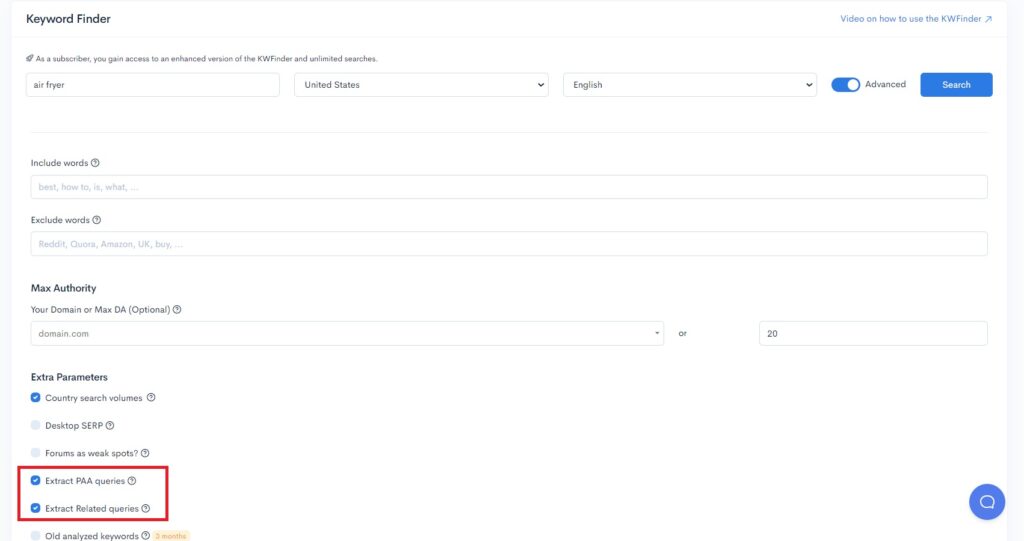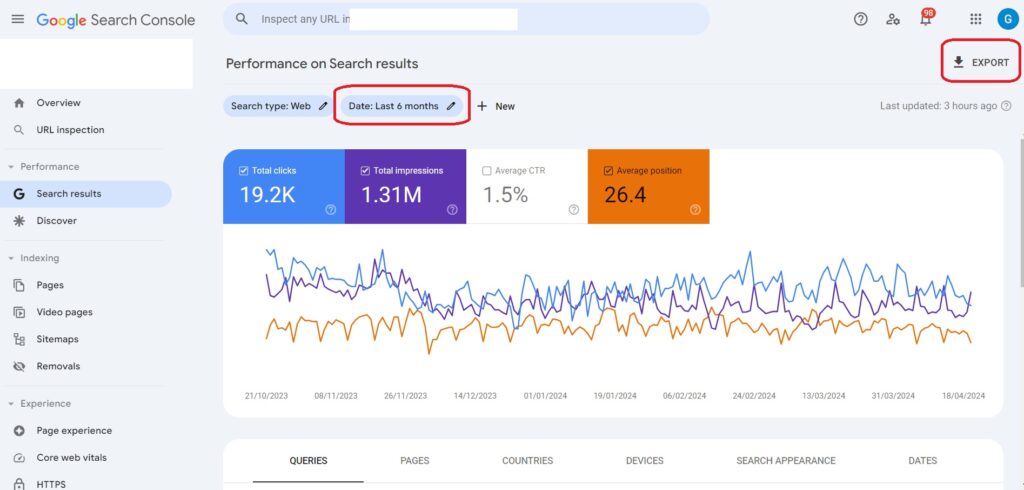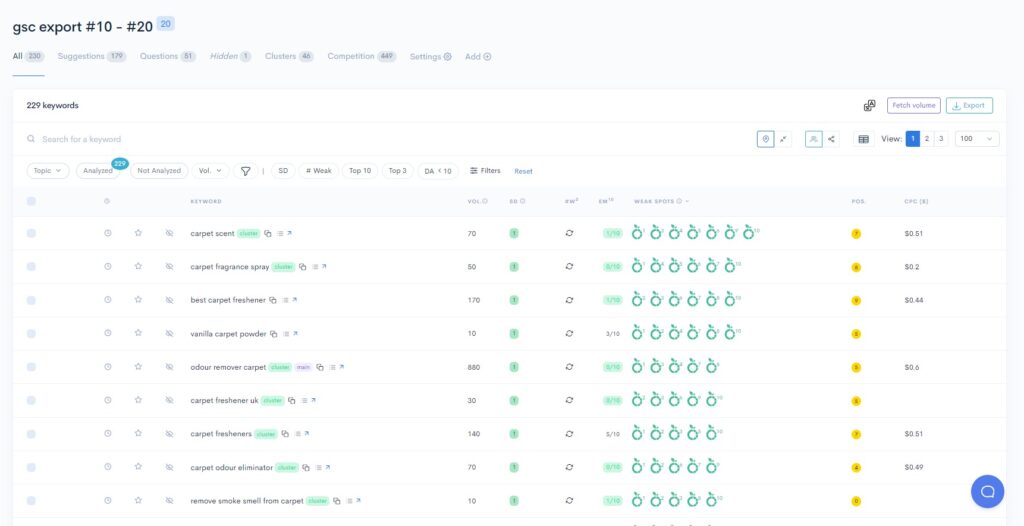How To Use LowFruits To Find Easy Keywords in 2024
Georgi Todorov

The problem with keyword research that I see in SEOs is that they miss on so much valuable keywords. This is because they find keywords from only 1 source/tool.
LowFruits gives you the tools and flexibility to approach keyword research in different ways so no keywords are left out.
In this article, we will go over the 4 different ways that you can approach keyword research inside LowFruits – featuring different niches.
These strategies can be used in combination so you do not leave any keywords on the table and you cover every corner.
#1: Using Parameters To Begin The Keyword Research (SaaS)
SaaS brands usually position themselves with 1 or 2 main keywords.
That means they need to find every possible keyword variation to these 2 core keywords.
For this example, we’ll take a ”client portal” SaaS brand that also wants to rank for ”customer portal” related queries.
Step #1: Type out the variations with a ”*” parameter
- client portal *
- * client portal
- customer portal *
- * customer portal
- client portal for *
- customer portal for *
As I mentioned earlier, we want to see *every* possible variation of these 2 core keywords.
Step #2: Input the variations one by one into LowFruits’ KWFinder

A few notes here:
- In SaaS it’s generally a better idea to look at worldwide volume so turn off ”country search volumes”
- I like to also turn off ”forums as weak spots” because in 2024 forums like Quora and Reddit are strong
- Click on ”Extract PAA queries” and ”Related” queries for more keyword ideas
After that click on ”Search” and on ”Access all keyword ideas for free”

Step #3: Start manually choosing which keywords fit your brand
Not all of these queries are B2B SaaS ones – some of them will be B2C (e.g., consumers searching for a branded client portal).

We are already getting access to the previously analyzed ”Search Difficulty” from someone else who has researched these keywords.
Note: The pre-analyzed Search Difficulty feature is available only to monthly and yearly subscribers only.
Now we need to carefully go after all keywords to pick the ones that fit with our brand.
The process is a bit tedious, but we did get access to *everything* – so we need to cherry-pick which keywords to analyze and which not.

Step #4: Analyze the Handpicked Keywords
After that, we click on ”SERP Extract” at the bottom and we analyze the SERPs to find which keywords are easy.

The way the tool works is that it analyzes the SERPs of the keywords and lists out how many weak websites (DA <20) are ranking on 1st page for it.
The amount of weak domains ranking on 1st page for the target keyword is shown via green fruits with their respective position.
The tool assigns a SERP Difficulty score of 1 to 3 (where 1 is easy and 3 is difficult), which I have seen to be quite effective when showing keywords to non-SEOs.
To continue finding easy keywords, follow this process with the other keyword variations.
Note: This approach can be used for any niche, not only SaaS.
#2: Starting Broad and Niching Down (Niche Sites)
The standard keyword research practice is to start off broad and then filter down to find your ideal keywords.
This can also be done in LowFruits but with a handful of useful features along the way.
Let’s take the broad niche site keyword ”air fryer”.
Step #1: Input your seed keyword inside LowFruits

A few notes:
- Click on ”Extract PAA queries” and ”Related queries” to get bonus keywords
- Leave the ”forums as weak spots” unchecked, since forums are also prominent in niche sites
After that we click on ”Search” and on ”Access all keyword ideas for free”.

Step #2: Click on ”Topic” and de-select topics you are not interested in
We begin by de-selecting any branded keyword topics or any topic that we’re not interested in.

Step #3: Filter by SERP Difficulty 1
For broad topics such as air fryer, there has been a lot of previous analysis done, which is why we allow our subscribers to see the difficulty of previously analyzed keywords.
We calculate the SERP difficulty based on the weak domains ranking on 1st page (DA<20) and assign it a value from 1 to 3 where 1 is easy and 3 is hard.

Note: The pre-analyzed Search Difficulty feature is available only to monthly and yearly subscribers only.
Step #4: Manually ”Hide” the keywords you are not interested in
We may not be interested in all of these keywords, so we hide some of them.

Step #5: Analyze the keywords that you decided to keep
Most of these keywords have been analyzed 2 or more months ago, and the SERP situation may have changed since then.
Select all and click on ”SERP extract”

After narrowing the keywords down and finding which keywords are still relevant, we were able to find 28 hyper-targeted and easy keywords.
#3: Reverse-Engineering Winners In The Industry (Niche Sites Continued)
28 easy keywords were not enough? How about we find what the top competitors in the air fryer niches are going after?
We are going to extract the rankings of some of the winners in the air fryer niche and then analyze the keywords to find which ones are easy.
Step #1: Open LowFruits’ Domain Explorer and input your seed keyword
LowFruits’ Domain Explorer is a weak website (DA<20) repository of 100,000+ websites that are doing well on Google in terms of traffic.

Note: The Domain Explorer feature is available only to monthly and yearly subscribers only.
Step #2: Filter by Performance and Select a few Winners
We filter by ”Performance” so we can see which websites receive the most amount of traffic for the low Domain Authority that they have.
And then we select 3-4 of them.

Step #3: Open LowFruits’ Rankings Extractor & Input the Competitors
We will use LowFruits’ extraction features to see what kind of keywords these weak domains are going after to get such good traffic.
After that, click on ”Import Top 10” to see which keywords they rank for on 1st page.

Note: The Extraction features are available only to monthly and yearly subscribers only.
Step #4: Get rid of keywords you don’t need
Go over the keywords and delete any branded or useless keywords that you wouldn’t need.

After that click on ”Import” by having ”Analyze all” unchecked and ”Old Analyzed Keywords” checked.

Step #5: Analyze the keywords you have not analyzed in your previous research
Amazingly, all the keywords we found from our competitors we could not find or analyze before.

So all that is left is to select all keywords and analyze all to find which ones have low competition.

We did not only find ~120 additional easy keywords around the air fryer niche, but we also found something interesting:
The winners of the industry are not going after keywords around ”air fryers”, but going hard on recipes WITH air fryer to capture the bigger demand around them, and probably then positioning their air fryer as the solution.
#4: Combining GSC and LowFruits (E-Commerce)
One last trick I’d like to show you with LowFruits is how you can combine the vast amount of keyword data from Google Search Console.
We’ll go with an example from an e-commerce brand because I do believe that established e-commerce brands should conduct their keyword research starting from GSC.
Step #1: Export your keyword rankings #10 to #20 from GSC
Here’s how you can export your rankings from GSC:
1. Open GSC and go to Performance > Search Results > Expand on Average Position
2. Filter by Date: Last 6 Months
3. Click on ”Export” at the top right corner and export to Google Sheets

Step #2: Copy the keywords from position #10 to #20
Scroll down in the ”queries” export and copy the keywords from position #10 to #20.
These are the keywords you are already ranking for on page 2, and they need a nudge to rank on page 1.
But when you’re an e-commerce brand going after hundreds of keywords, you need a way to prioritize which ones to go after first.
This is why we will analyze them to find which ones are easy so we can go after them first.

Step #3: Add your domain to LowFruits
Go to Websites and add your domain to LowFruits so you can look at live data on keyword positions when analyzing data.

Step #4: Paste the Keywords in LowFruits Import
You can double-check the keywords and remove any keywords that you do not believe make much sense to go after (e.g., ”top 10 pets” – how did we even rank for this?)

Since this is my first touchpoint with this brand on LowFruits, I will leave the ”Analyze All” function.
Note: If this strategy is a part of your broad keyword research strategy inside LowFruits, leave the ”Analyze All” button unchecked and ”old analyzed keywords” checked.

Step #5: Prioritize which keywords you will optimize for first
We find that many of the keywords we rank on page 2 have weak competition, and we would need to go back and update/re-vamp them.

The way to prioritize this keyword list is by looking at the keyword data presented by LowFruits.
Key Takeaways
- Do not approach keyword research from only 1 place or data source
- To get the biggest amount of keyword ideas combine the LowFruits Rankings Extractor, Keyword Explorer, and GSC data
- Every niche is different in terms of keyword research, but you can standardize your process of not leaving easy keywords on the table
- Do not waste LowFruits credits on keywords you’ve already analyzed – keep close attention to the ”Analyze All” button
- Make conscious decisions about whether you want to include the Forums such as Reddit and Quora as weak competition in your niche